
Woodline Products Victorian House kit
I’ve finally snagged my own fantastic craigslist deal on a vintage kit….a Woodline Victorian House for $12. No, that’s not a typo.
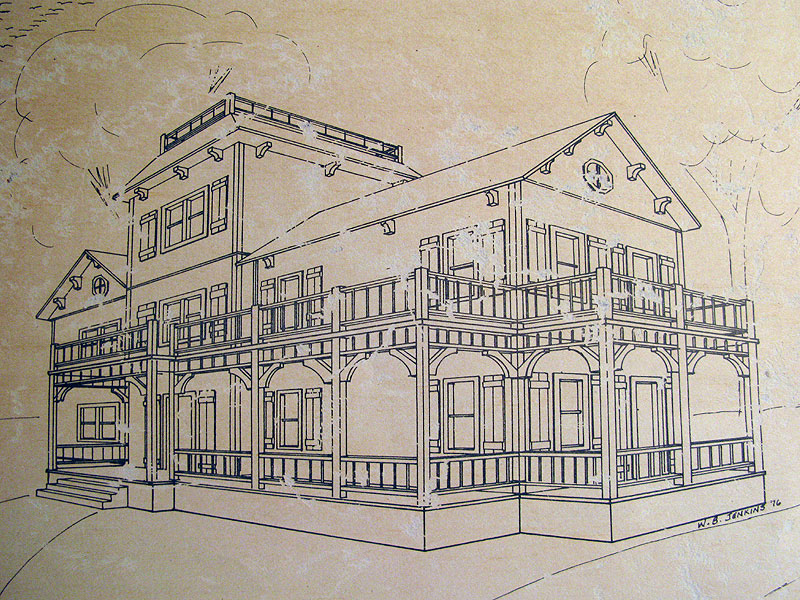
It’s a huge, gorgeous thing. Here’s one for reference called Pop’s Dollhouse. Yes, I am still selling the Newport for being too large, so this one is going to sit for a long time.
I actually had no idea what it was, just that the box said Woodline Products. For $12, it was worth the gamble.
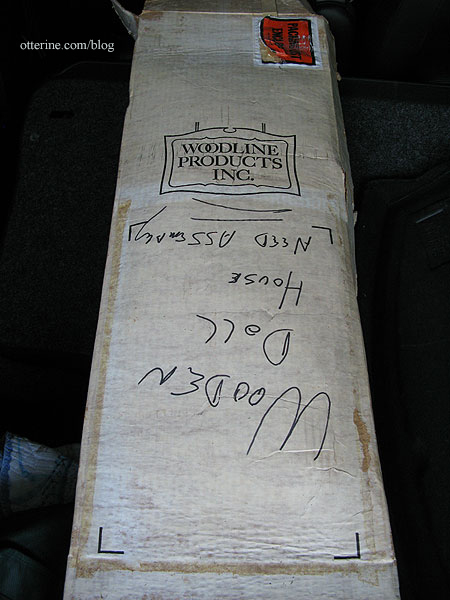
I was hoping for the Prairie Manor, but this was a good result, too. It’s just not a house I was looking to find.
The kit is still packed the way it was shipped, though the outer box was falling apart. I unpacked it in the garage to make sure there weren’t any nasties lurking inside and packed it in a new box.
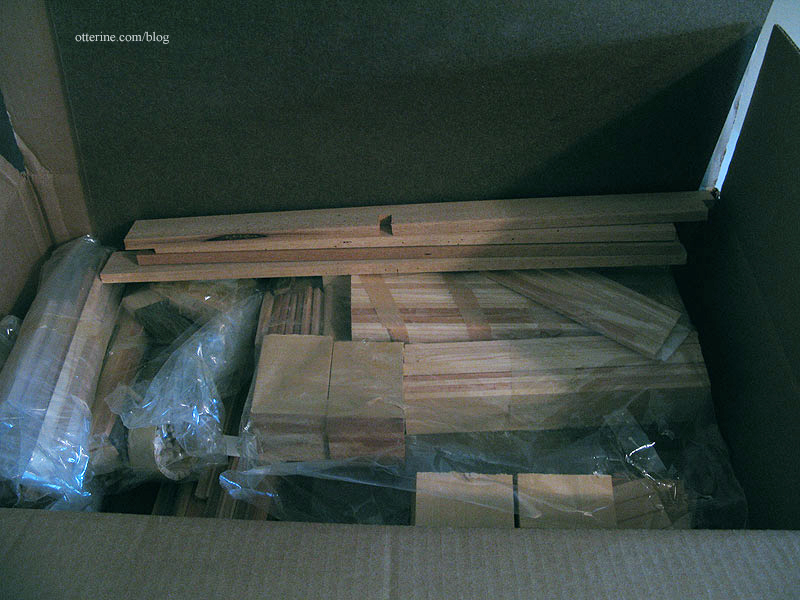
The foundation pieces have these tiny holes…from the little bit of research I’ve done online, looks like powderpost beetle activity. All other wood in the kit is pristine, and this looks like a long dormant issue. Still, I’m inclined to pitch the foundation boards and cut new ones. They are simple straight boards, and I’m not keen on treating a dollhouse with harsh chemicals (I have small pets not to mention caring about my own health). Yes, it’s still in the garage. I’m going to watch it the next couple of days to see if there is any change, but I doubt there will be.
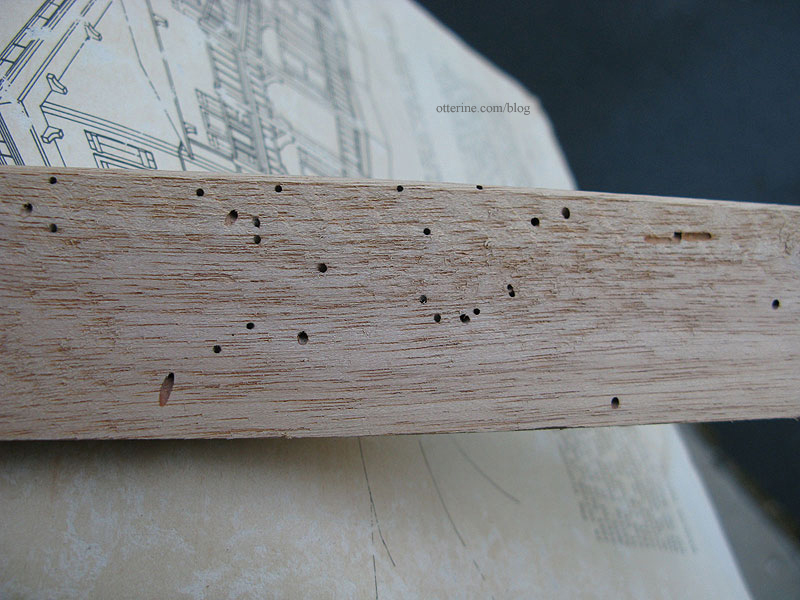
Of course, I could do something like this with it. :D Oh, I don’t know…
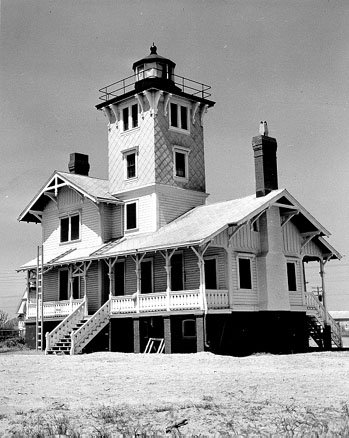
Hereford Inlet Light, photo by USCG Categories: Jasper Inlet Light
May 24, 2012 | 0 commentsPhotographing minis without a room box
When I post photos of new minis, I don’t usually photograph them in a dollhouse or room box. I do a quick setup on my dining room table.
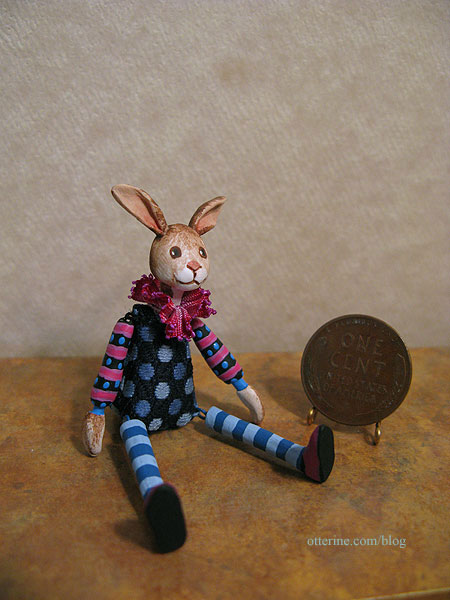
Here’s my Halloween 2013 scene, for instance. It was set up on the kitchen counter. I used a sheet of unfinished wood flooring, a scrapbook paper sheet clipped to a piece of plywood and held up by a can of paint and miscellaneous miniatures to create the scene. I have a box for balancing the camera in low light for the nighttime photos and a piece of white foam for diffusing the overhead light in normal lighting conditions.
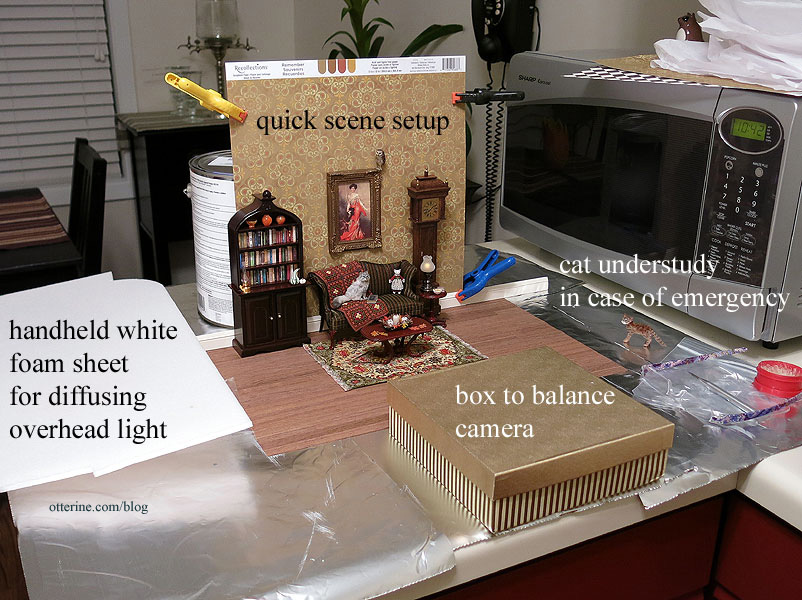
I start with either a small box or a sheet of plywood on top of canned goods from my pantry. High tech all the way! I then put a sheet of unfinished wood flooring on top of the box or plywood. I use another can to hold up either a scrap of foam core board or plywood and place a sheet of scrapbook paper in front of that.

I place a long piece of baseboard trim in front of the wallpaper to finish the “room.” If it’s a table top item, I borrow a display table – usually this EuroMini’s island I painted for the Newport. Along with the item to be photographed, I include my wheat back penny on a wire stand for size reference.
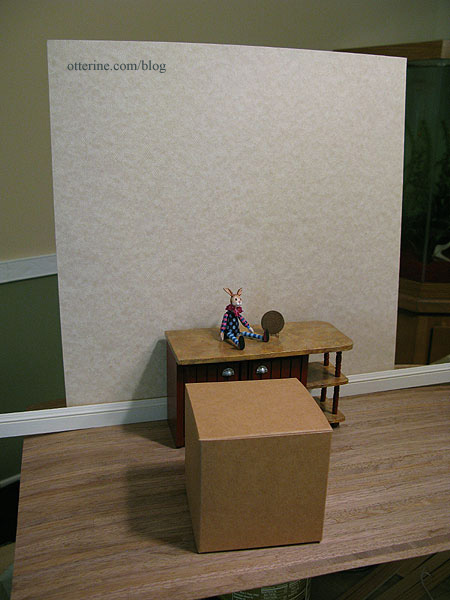
I use the standard macro setting on my Canon PowerShot G9 with its standard lens. If I need to steady my hand, I’ll stack more canned goods to the proper height or use a box in front of the display table. I also use only the overhead lighting of my dining room fixture, which can be adjusted with a dimmer as needed.
For non-table top items, I just use the scene as is without a display table. In this next photo, I’ve used a piece of finished flooring.

With this kind of quick setup, I can change the wallpaper and baseboard between photos easily. I can also add other props to the display.
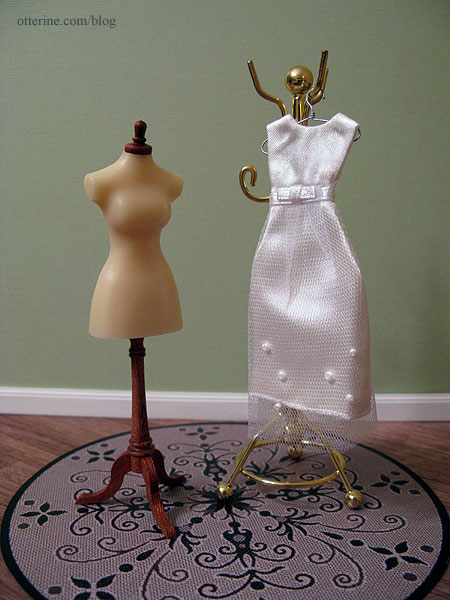
If I am in a hurry or just need to photograph one thing, I don’t bother with any of the setup. I grab a clean plywood board, put my item on it, hoist it up in the air so my dining room wall is the backdrop and click the photo! :D
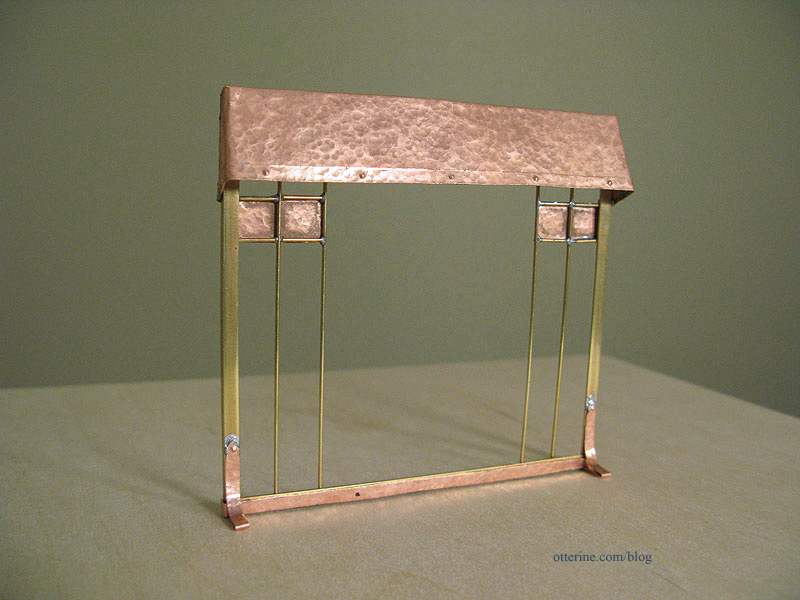
But, even with this on-the-fly setup, I can still put a piece of flooring on the plywood board beforehand.
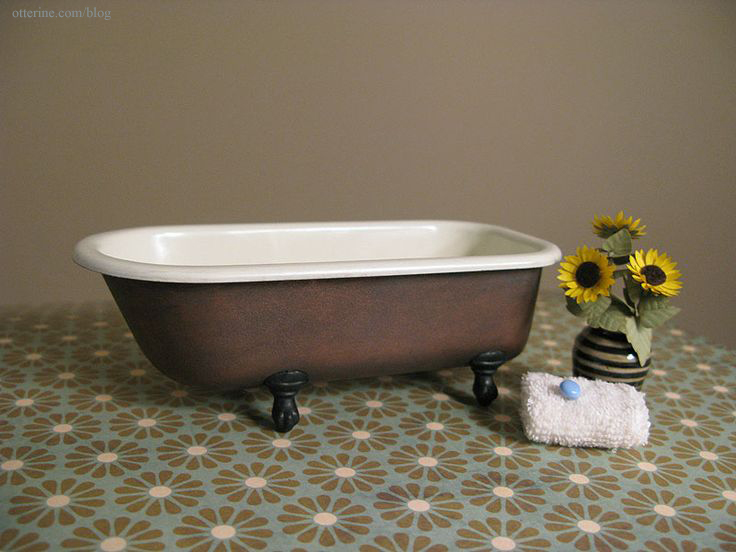
For the Navajo rug, I place the stitching frame flat on the table, prop up wallpaper on the side and back, and include props.

Categories: Roomboxes and Mini Scenes
May 24, 2012 | 0 commentsFancy bow front dresser, part 1
What I like most about the Heritage bedroom is while all required pieces are accounted for — fancy bed, nightstands and vanity — nothing matches exactly. I don’t mind a bedroom suite, but I rather like the idea that grandma has chosen pieces simply because they spoke to her not because they made up a matched set.
To that end, grandma still needed a dresser. I picked up a furniture and accessories lot from craigslist some time ago, and in it was a Houseworks bow front dresser kit.
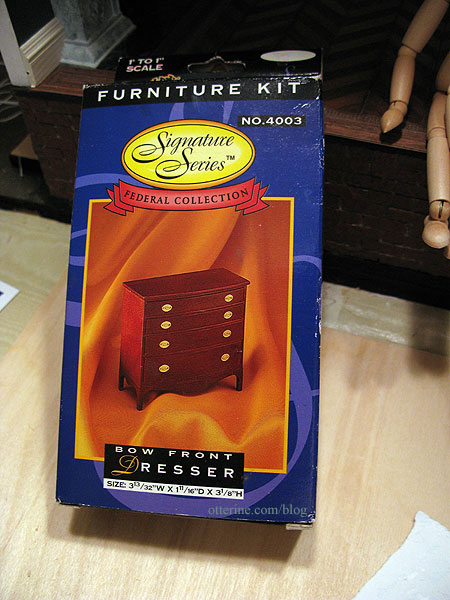
I made no changes to the base kit, though I did add a mirror made of frame strip wood.
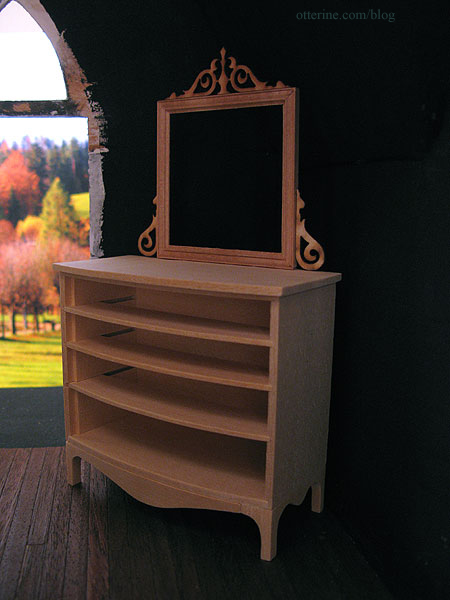
To fancy up the mirror, I added laser cut embellishments from Heritage Laser Works. They have such great things!
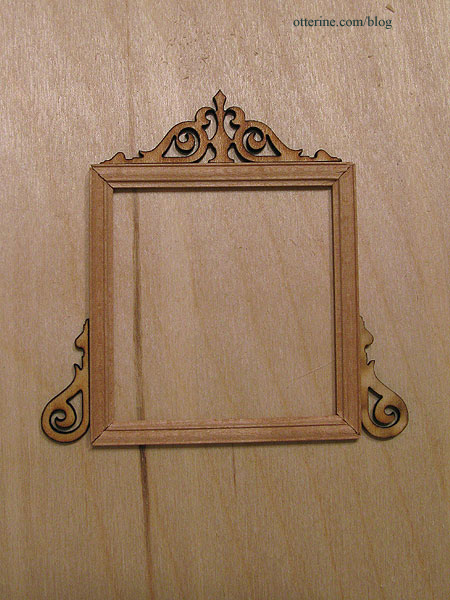
I made sure the dresser wouldn’t be too tall for the corner with the added mirror. I plan to angle the dresser so I can see more of it when looking into the room from the open back. Here I’ve used The Chair from the parlor as a stand in for the one I plan to make. I think everything will fit well in the room without seeming crowded.
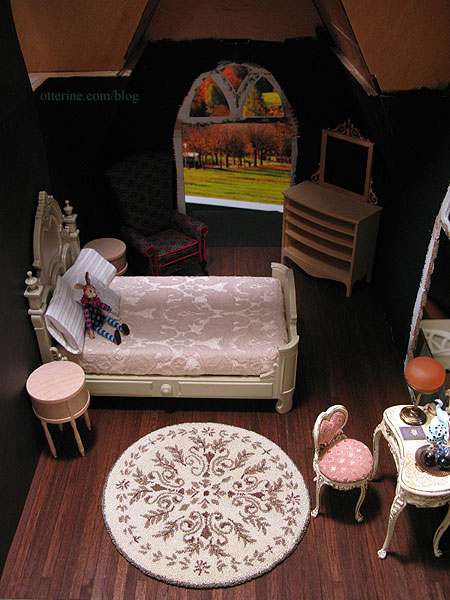
I wasn’t keen on wiring this corner, so I picked up a battery operated LED lamp for the dresser. It’s been noted on other blogs and forums that these lights have a blue cast that’s not like candlelight or incandescent bulbs. A Greenleaf forum member, Debora, found a wonderful fix for it. She dotted some peach/orange glass paint on the tip of the bulb. The complementary color softens the blue and makes for much better light. The light from this lamp is actually a bit green.
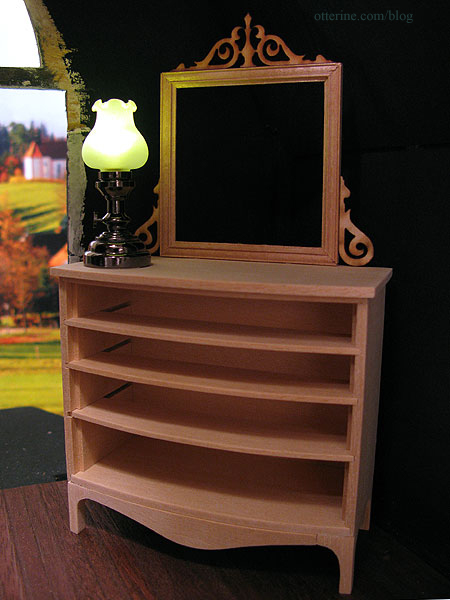
The paint I had on hand for glass and ceramics wasn’t transparent, but I used just a little bit of it so it didn’t block out too much light. I had to mix red and yellow, but it worked! :D
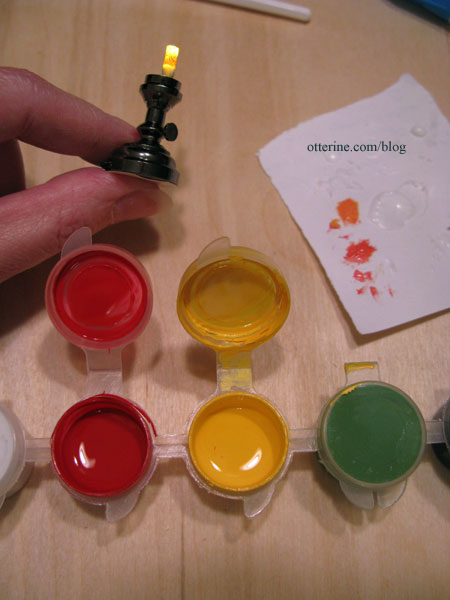
The red paint on the bulb is somewhat visible when the lamp is off, but I’d rather have a closer approximation of candlelight when the lamp is on, so it’s not really an issue for me.
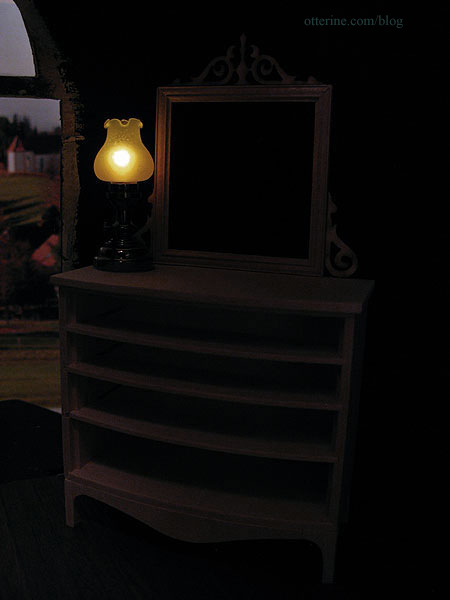
Categories: Furniture, The Haunted Heritage
May 23, 2012 | 0 commentsAntique drum nightstands, part 1
I’ve been thinking awhile on the type of side tables I wanted for the Heritage bedroom. With the ornate bed and feminine vanity and chair, I needed something with antique style while not being overpowering.
My artist models came with round wood bases and metal pins to hold them up, though they stand on their own just fine. I removed these bases when I first got the models, but I kept them since they were smooth round wood shapes and I knew they would make a fabulous trash to treasure project some day.
The bases measure 1 3/8″ in diameter and 9/16″ tall. I grouped them with 1 1/2″ x 1/8″ wood circles and Houseworks 1 9/16″ long spindles.
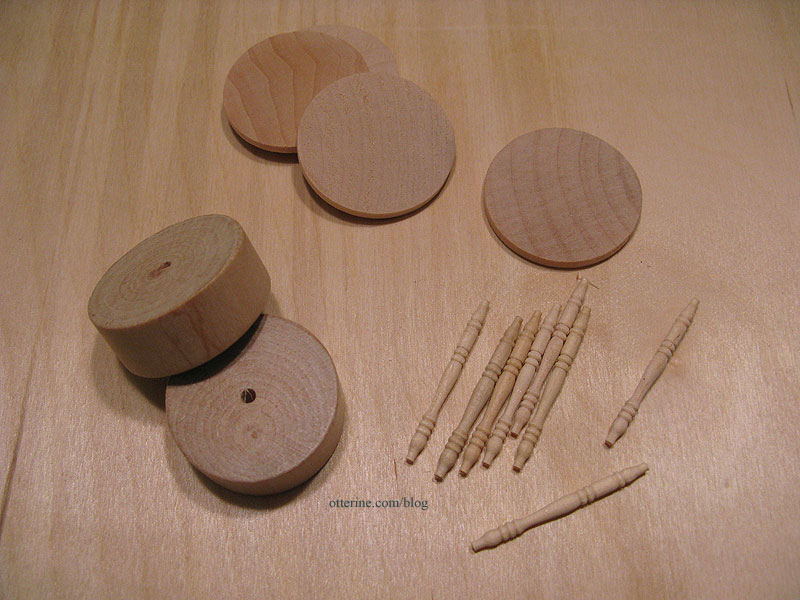
I first glued two circles to the top and bottom of the base.
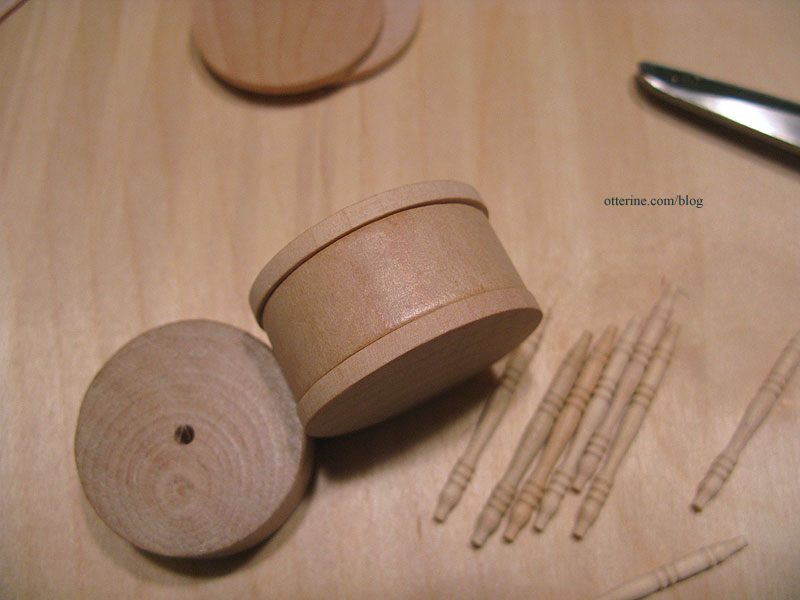
I then added thin veneer strips to delineate a front drawer.
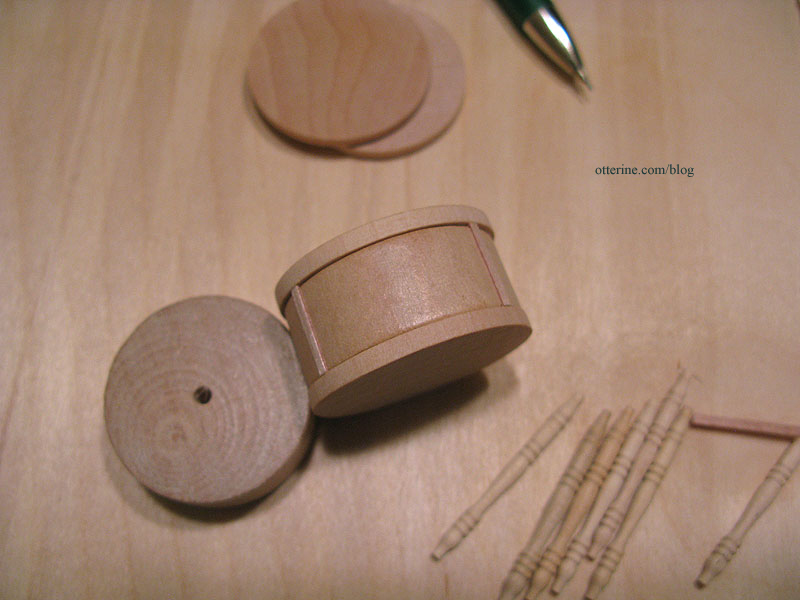
I drilled pilot holes for the four legs.
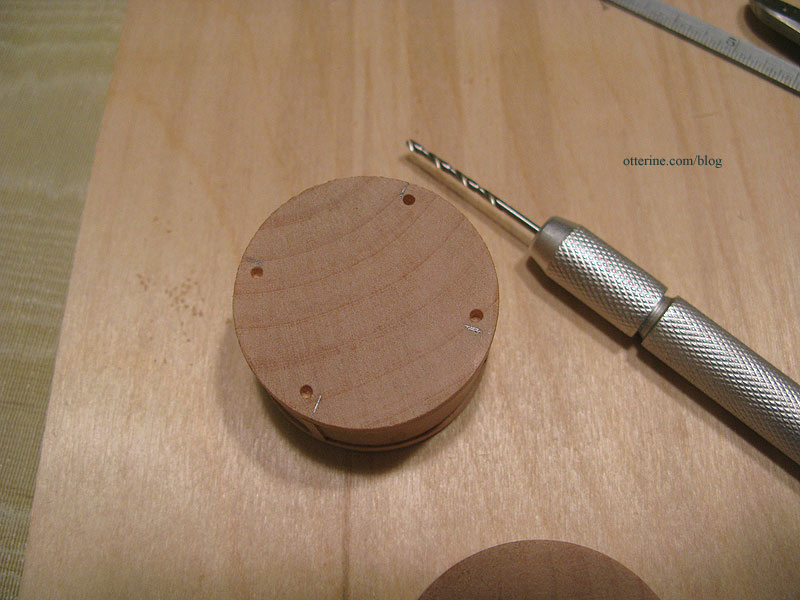
For now, I’ve just pushed the legs into place. I need a clear head and a steady hand to get these glued in straight and even since I like the tables without cross supports.
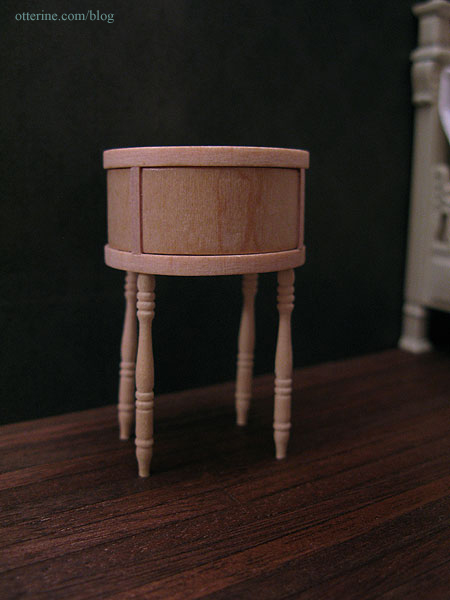
The pillows were made by me, and Mr. Rabbit is by K. Kuti. I still haven’t replaced the stock bedding that came with the Bespaq bed I’m in the process of refinishing.
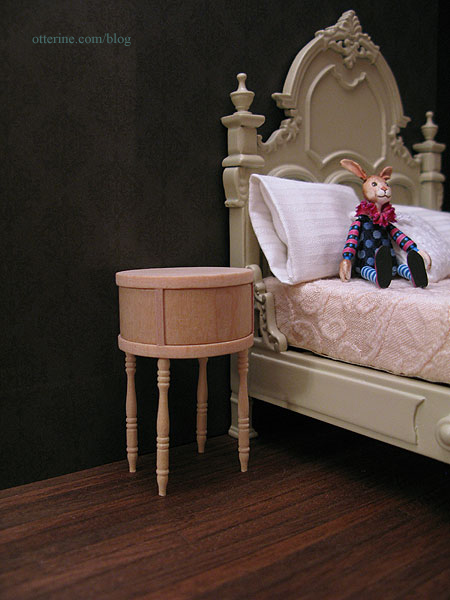
With some fancy painting and antique knobs, the nightstands will fit right in! :D They don’t take up much room but have a nice style.
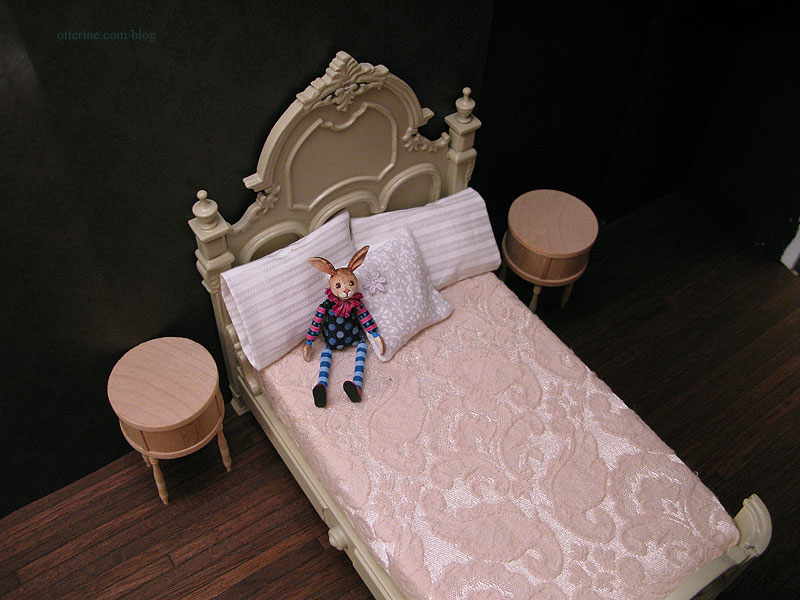
The nightstands received a light spackling to remove some of the imperfections in the wood pieces as well as the rough grain that was showing through the paint. They will need at least one more coat of paint.
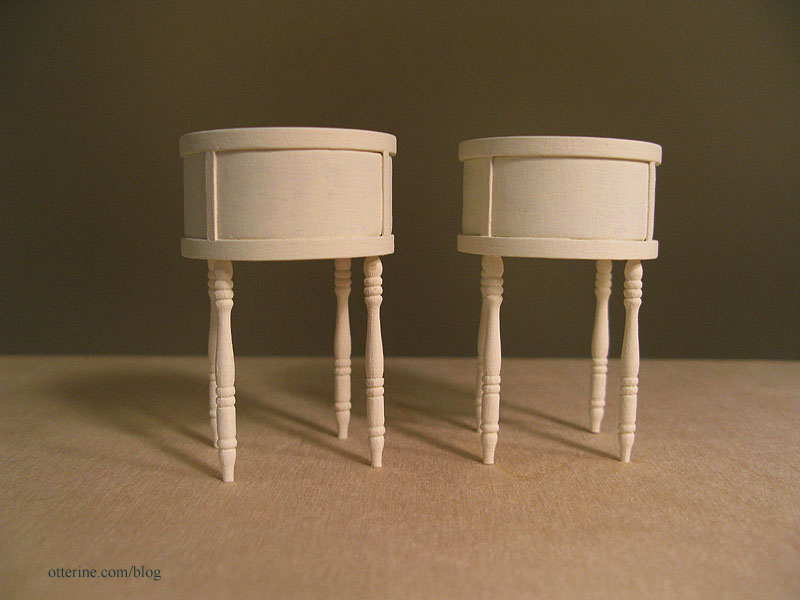
Even though the base coat is lighter than that of the bed, I think the pieces will coordinate well in room. As I mentioned before, I don’t want everything to match but be a collection of well-loved items.
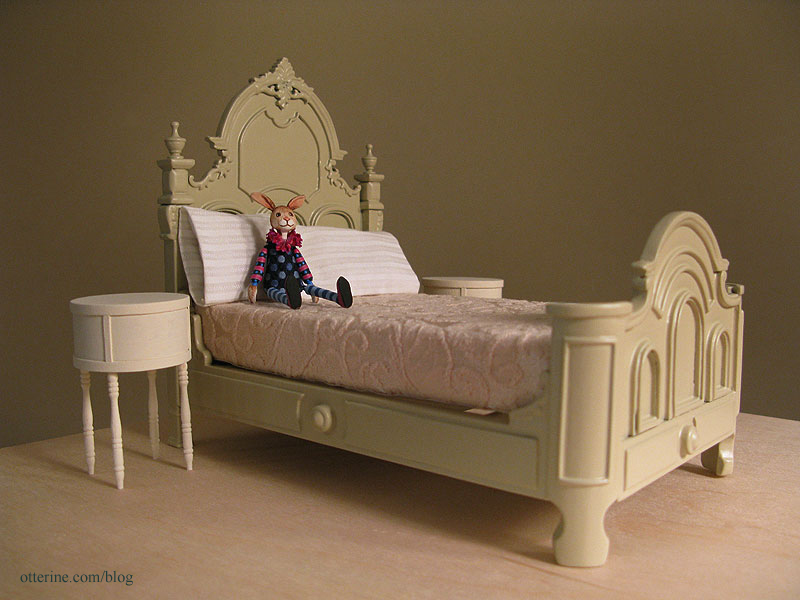
I might give hand painting designs a try for these pieces. They seem to call out for fancying up beyond just pretty hardware, don’t they? I will practice on scraps first, though. I don’t want to have to start all over!
Categories: Furniture, The Haunted Heritage
May 22, 2012 | 0 commentsCutting egg carton bricks plus links to finishing
Many people have asked how I get my bricks so uniform, and I can tell you they are close but not exact. The bricks I make are 1/4″ x 3/4″ for most projects. This is a little off from exact 1:12 scale, but they look spot on when finished. Whatever size you use, you do want consistency. Painting and grouting make up for any obvious flaws, and if a brick is too far off from the rest I just don’t use that one.
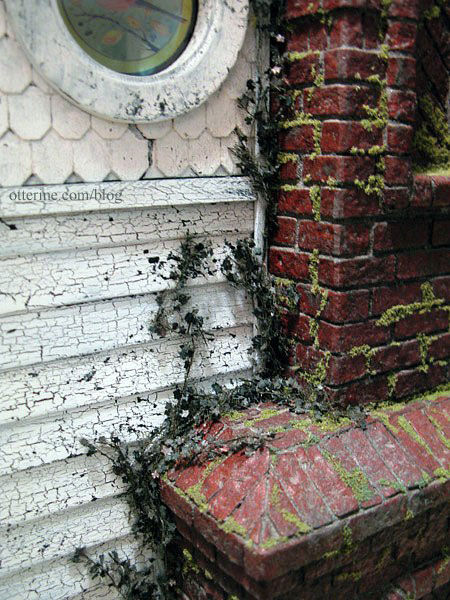
I first learned of egg carton brickwork from two great sites: Connie Sauve’s The China Doll and Victoria Miniland (both sites are now defunct as of 2024). I use the method from The China Doll.
I obtain egg cartons from various sources: my own household, mom and a local freecycle group I belong to. You can post want ads or reply to offers on that site, and it’s free! I use the flat surfaces of the lid and recycle the bottoms with the egg cups. You could get bricks from the cups, but to me it isn’t worth the extra time and effort. I also use the interior surface as the brick face since it has a nice bumpy texture. Words and images won’t matter after painting.
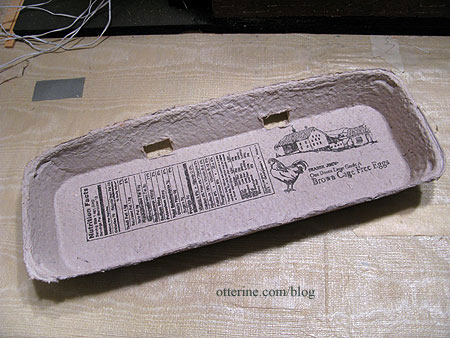
I cut the pieces into manageable flat sections. The large, flat top is obviously the best source of bricks, but the smaller pieces yield quite a few.
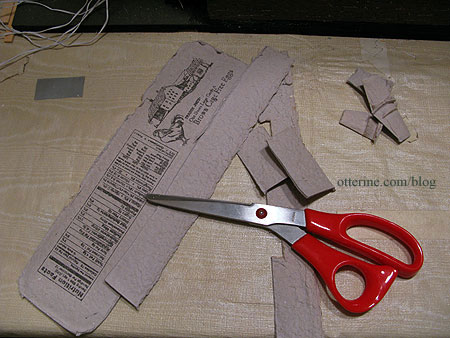
I mark one edge with a ruler and use scissors to cut along that line. If you aren’t good at keeping scissors on a straight line, you can use a sharp X-Acto knife.
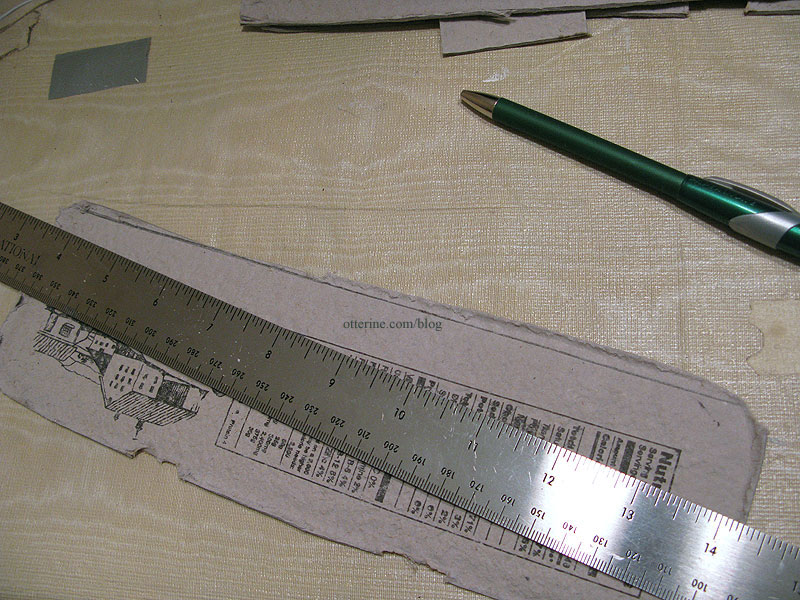
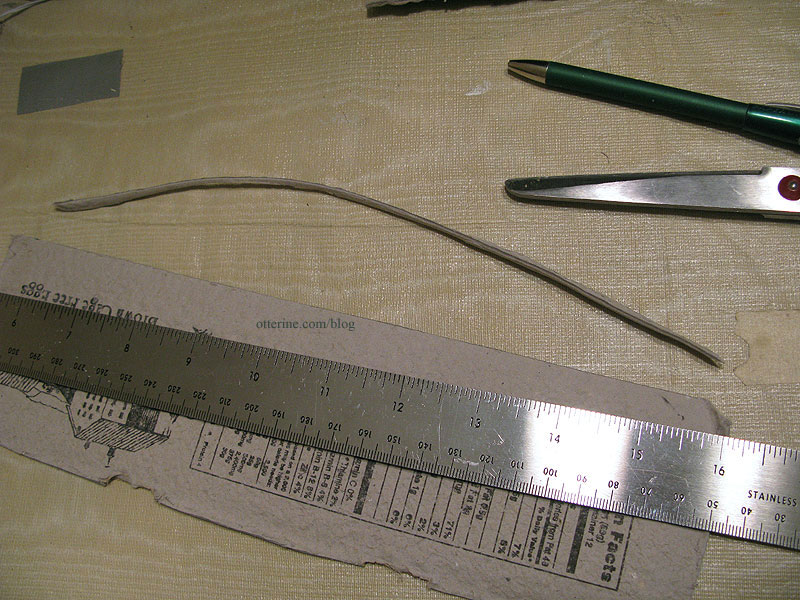
From that clean, straight edge, I mark four 1/4″ increments in several places along the edge.
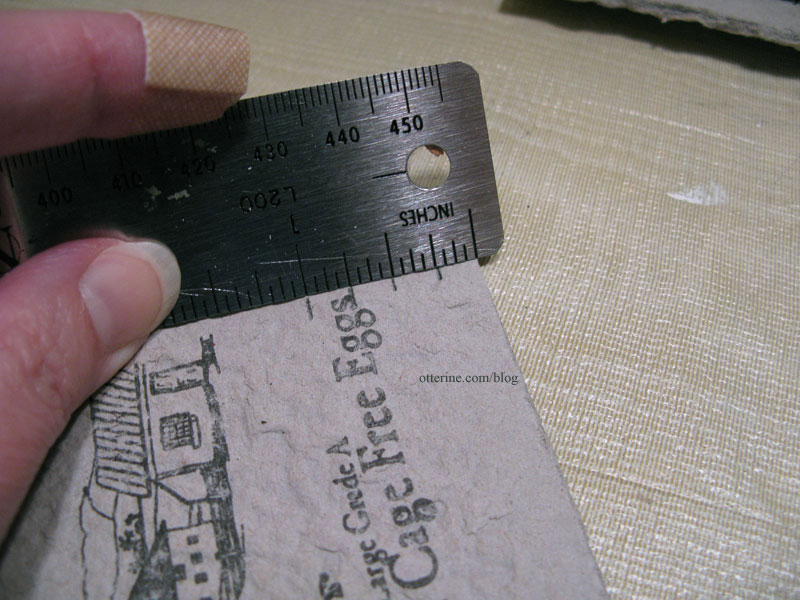
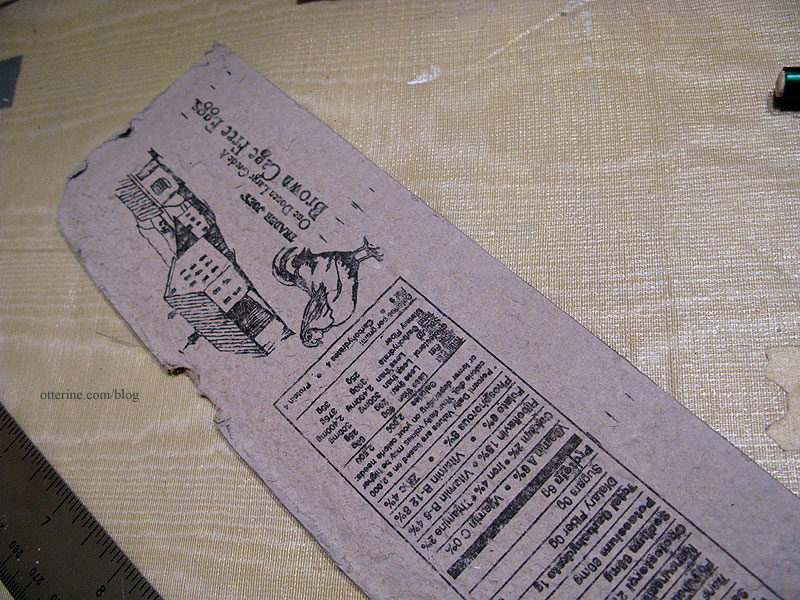
I use my ruler to join those marks and make guidelines.
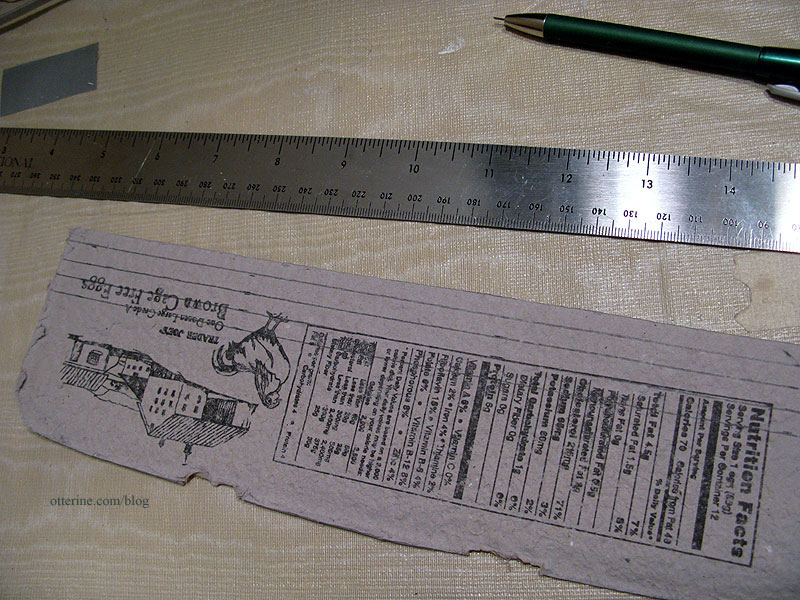
I cut along those guidelines. Again, I use scissors since my sewing experience gives me a steady hand at cutting straight lines with them. You can use an X-Acto blade, too.
After the fourth strip is cut, the edge is usually off a little. I draw a new line across and clean up the edge before repeating the 1/4″ increments until I run out of egg carton.
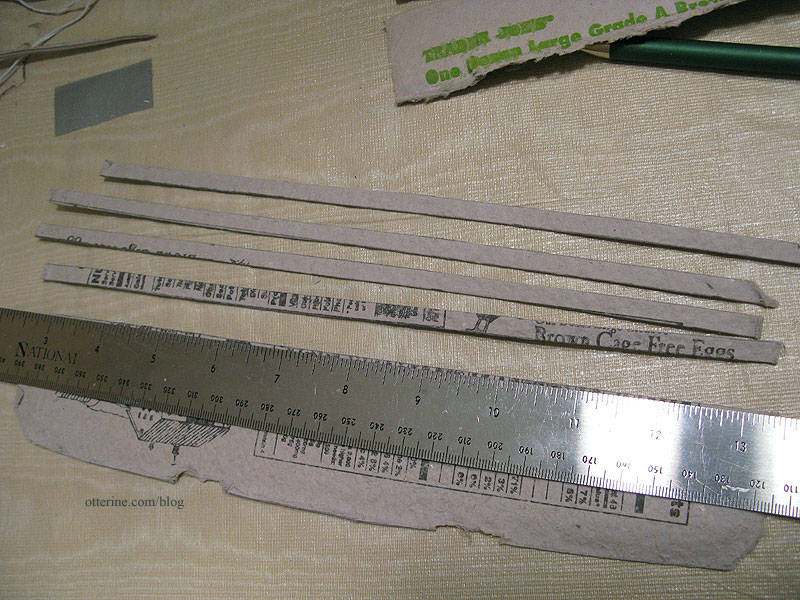
I square up the ends of each strip with scissors and then mark 3/4″ increments along the strip.
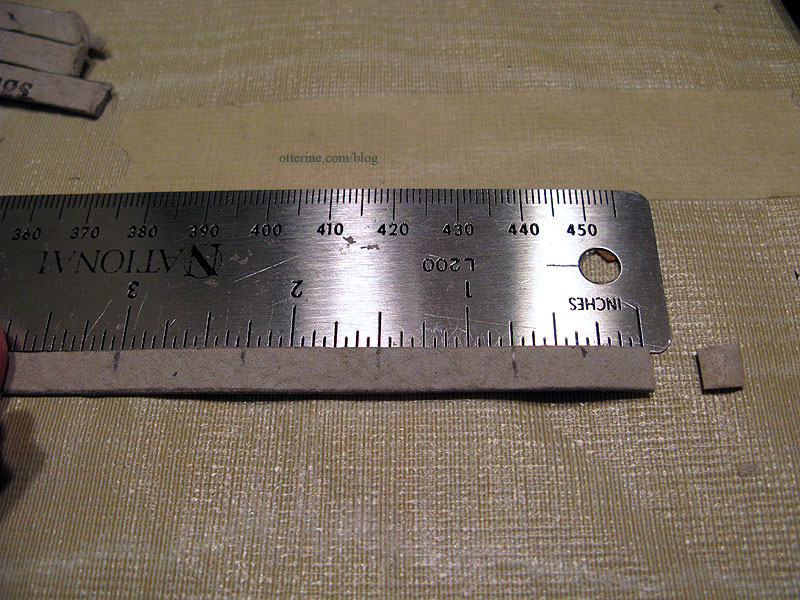
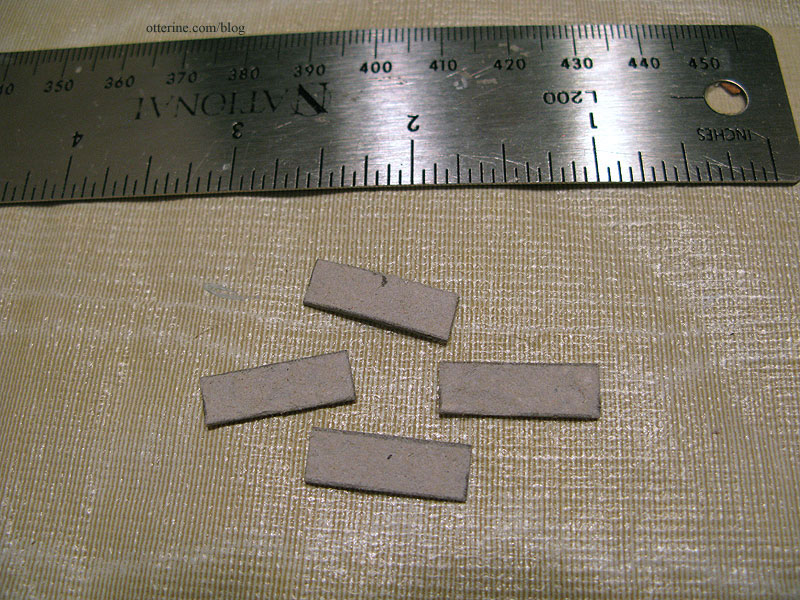
If I am bricking around any corners, I cut them to fit. These will have approximately 3/4″ showing on one side and approximately 1/4″ around the bend, but they do vary depending on how well you place the regular bricks.
Here’s the chimney at Baxter Pointe Villa painted with layers of brown acrylics and grouted in grey. You can see the longer bricks used around the corners.
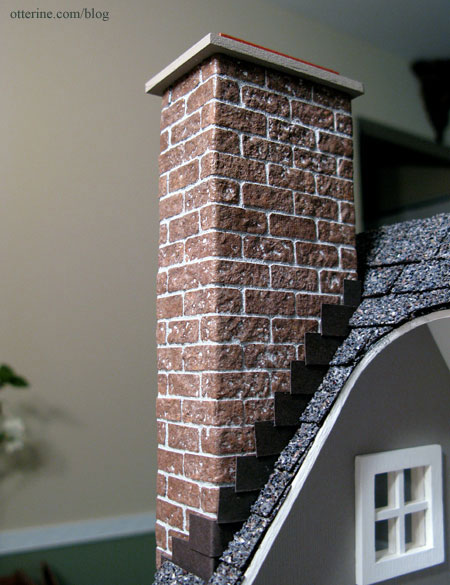
At the end of each strip, there is usually a piece that is too short. I mark that with an X and put it in a separate pile. When you do brickwork, you often need short or angled pieces. These leftovers are already the right height and can be cut to fit those smaller areas without wasting your full sized bricks.
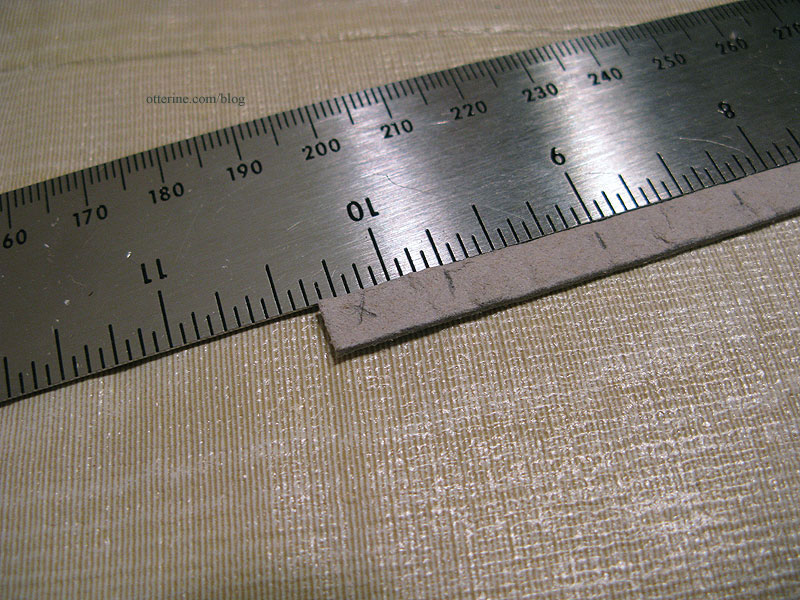
Once I have a pile of bricks, I cut the corners from each one. This gives them a more natural appearance in my opinion.
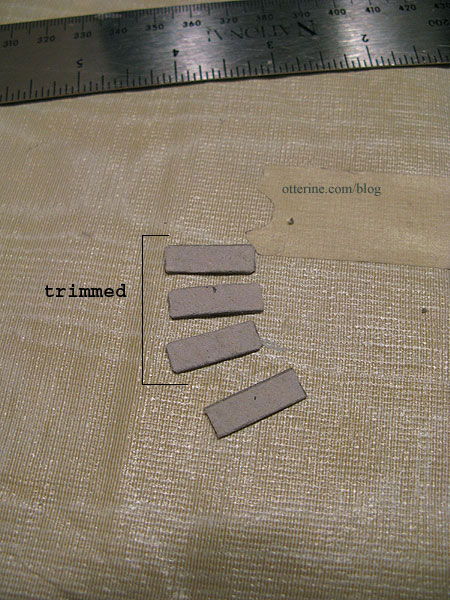
Here are my four new bricks with a bunch I’ve cut previously. They are all close in size and shape but they do vary.
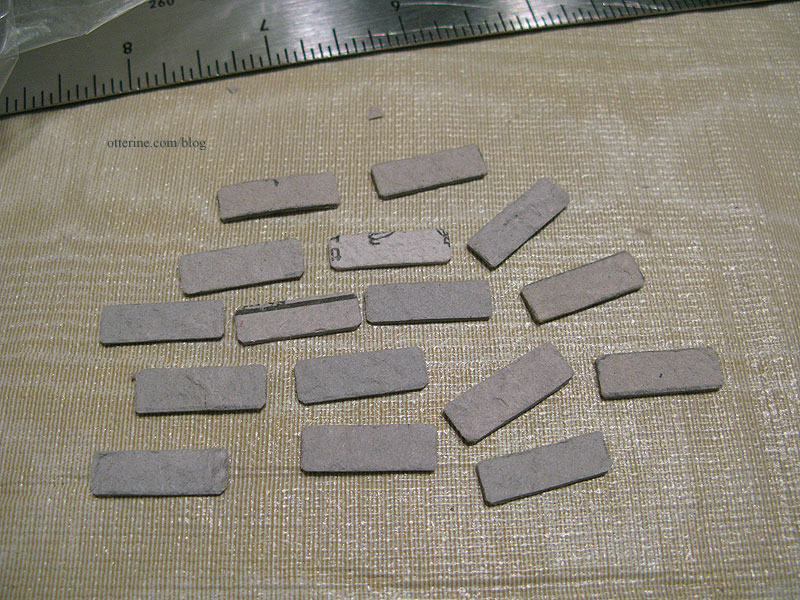
I keep a large ziploc bag for my finished bricks. I keep a smaller bag inside for bricks that have been cut to size but the corners still need to be trimmed. I also have a bag for scraps. If I’ve cut a different sized brick, I use a note inside the bag so I can tell which is which.
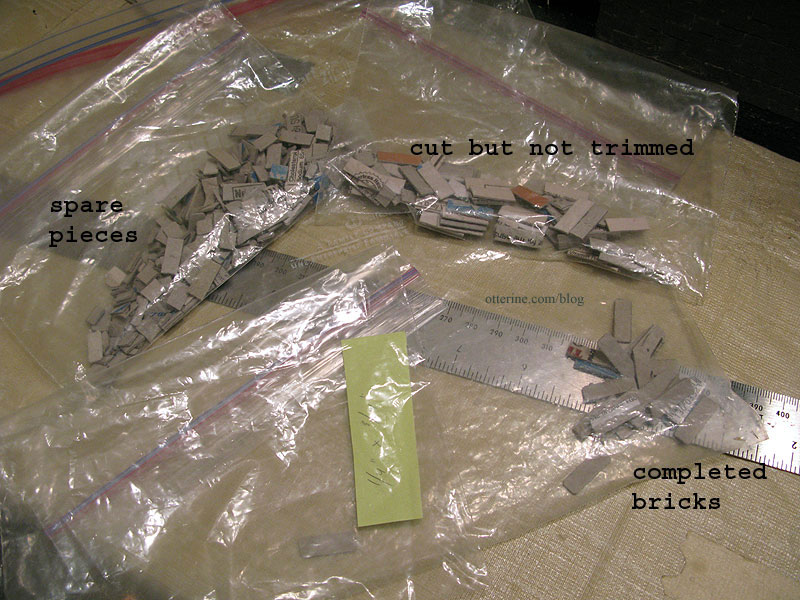
For the Heritage chimney, I used guidelines drawn on my underlying structure to plan the exact number of bricked rows I would need and to keep the structure aligned properly.
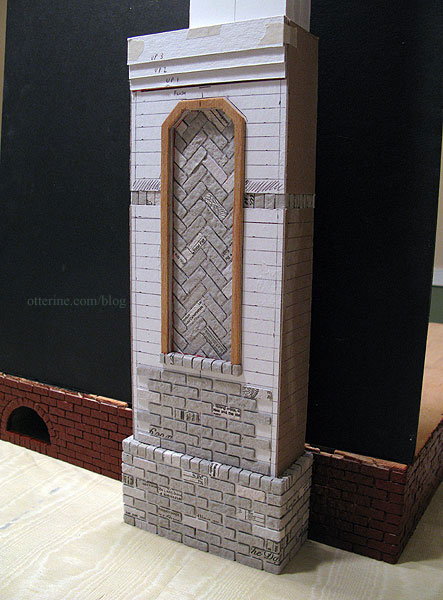
For herringbone brickwork, I use graph paper as a guide. You don’t really fill in the squares per se, but the grid helps create a more uniform pattern.
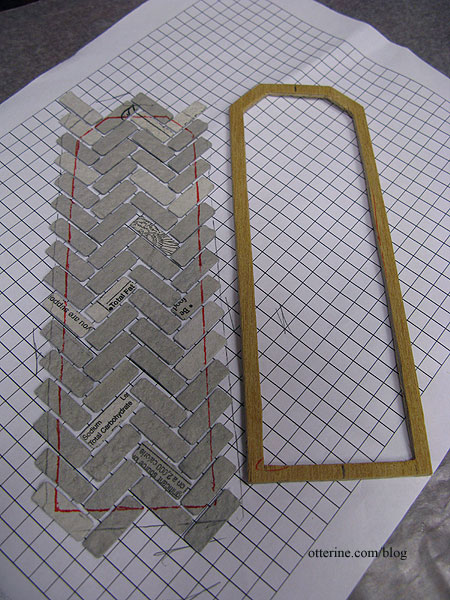
However, I usually don’t bother with guidelines for straight brickwork. I am able to eye measurements well, so I just glue the bricks with a little bit of give in between them and check with a ruler every other row to make sure I haven’t gotten too far off.
I use Aleene’s Quick Dry glue to apply the bricks. Once the bricks are in place and the glue has dried, I paint with acrylics in the color of my choice. I use a stencil brush and stipple the paint on since brushstrokes can ruin the illusion.
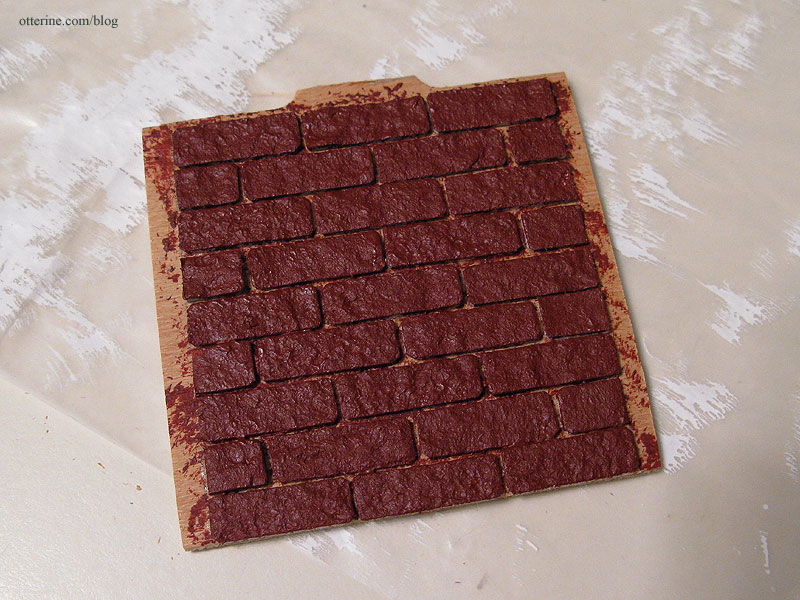
Once I have the color I want, I seal the surface for grouting. The grouting process will change the coloration, so keep that in mind when you paint. You can touch it up later. For instructions on painting, sealing and grouting, see my post on finishing the Heritage foundation. For instructions on aging the brickwork, see my post on adding grime and moss to the Heritage foundation.
Categories: Miniatures
May 17, 2012 | 0 comments
NOTE: All content on otterine.com is copyrighted and may not be reproduced in part or in whole. It takes a lot of time and effort to write and photograph for my blog. Please ask permission before reproducing any of my content. Please click for copyright notice and Pinterest use.






































